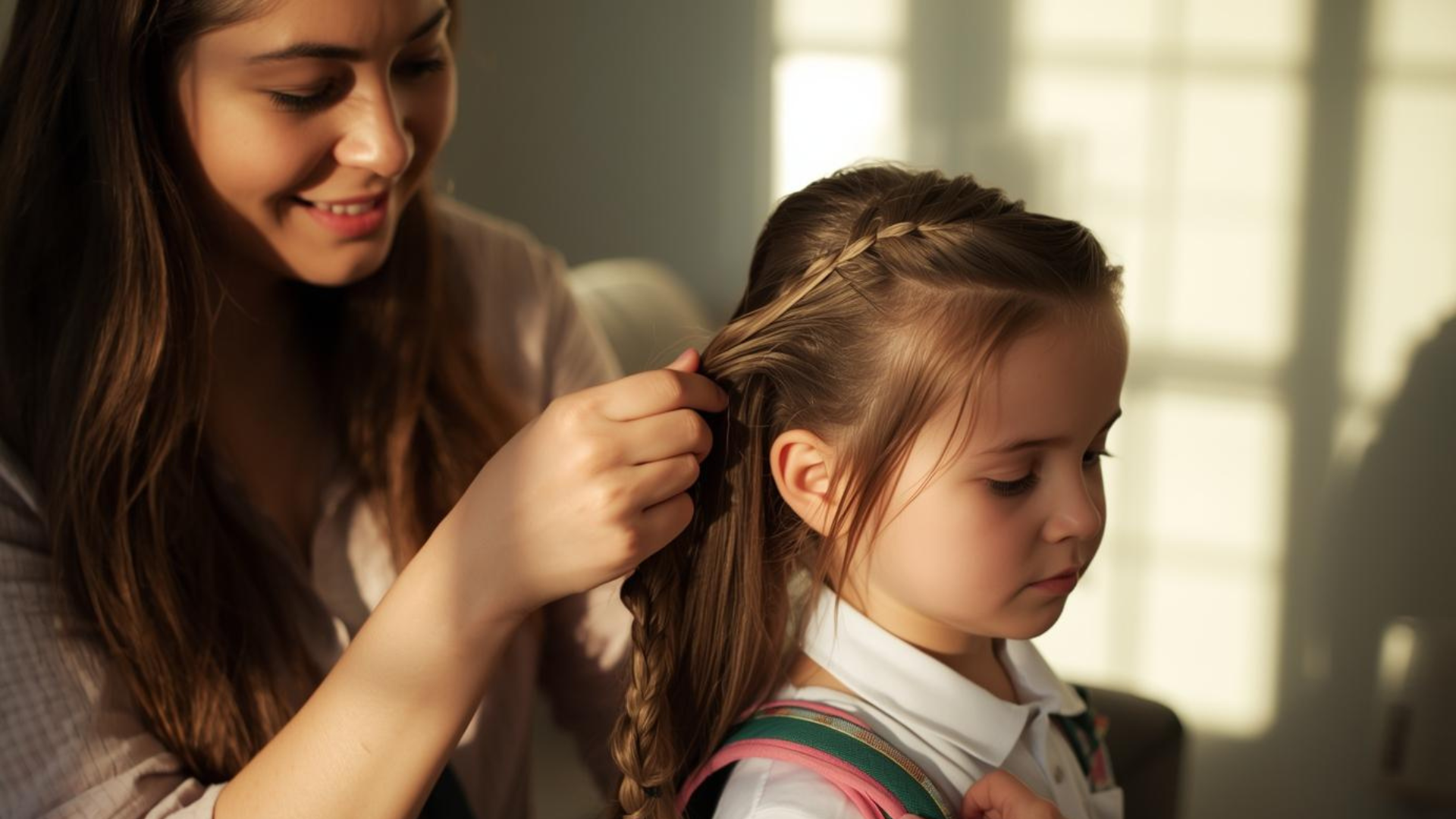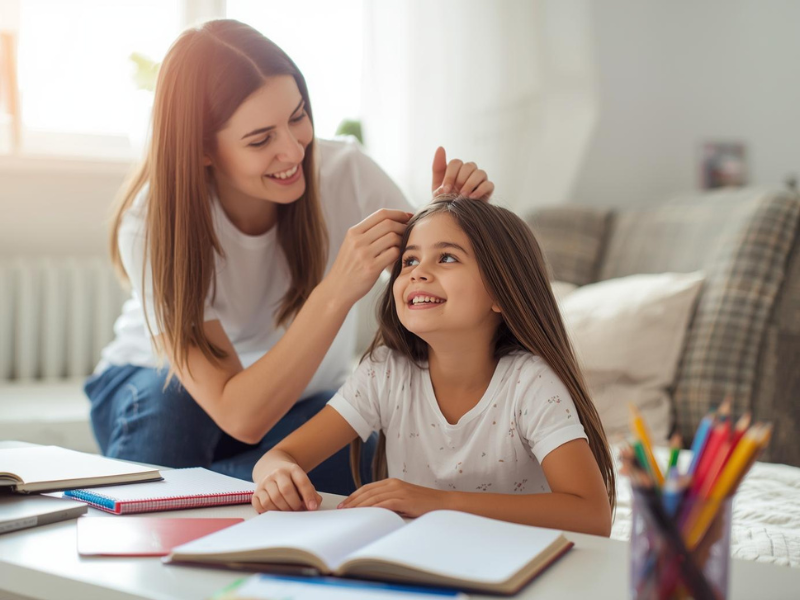Every parent looks forward to the start of a new school year, the smell of freshly sharpened pencils, the excitement of meeting new teachers, and the joy of watching kids reunite with friends. But for many families, the return to classrooms also brings a less pleasant reality: head lice.
Head lice are a common part of school life. While they don’t carry diseases or indicate poor hygiene, they can cause discomfort, stress, and disruption to families and classrooms. The good news is that with a little knowledge and preparation, you can protect your household and handle any outbreak quickly and confidently.
This comprehensive guide will walk you through everything you need to know, from how lice spread to proven prevention strategies, what to do if your child gets lice, and how LiceDoctors can help with safe, effective, and guaranteed treatment.
Understanding Head Lice: What Every Parent Should Know
Before you can prevent lice, it helps to understand exactly what they are.
Head lice (Pediculus humanus capitis) are tiny, wingless insects that live on the human scalp and feed on small amounts of blood several times a day. They survive by staying close to the warmth of the head, especially behind the ears and near the nape of the neck. Despite the common misconception, lice don’t jump or fly, they crawl, moving from head to head through direct contact.
A single louse can lay up to 10 eggs (nits) per day. These nits attach firmly to hair strands near the scalp and hatch in about a week. Within days, the new lice mature and begin reproducing, quickly creating a full infestation if not treated properly.
Why Schools Are a Hotspot for Lice

Schools provide the perfect environment for lice to spread. Children are naturally social, they hug, lean close, whisper, and share personal items without a second thought. All of these innocent behaviors create opportunities for lice transmission.
Here’s why lice are particularly common in school settings:
- Frequent Head-to-Head Contact
Group learning, circle time, and close play create countless opportunities for lice to move from one scalp to another. - Shared Belongings
Children often share hats, brushes, scarves, headphones, and even pillows during nap time, all of which can transfer lice or nits. - Delayed Detection
Lice can take weeks before symptoms like itching appear, meaning infestations often spread quietly before being noticed. - Stigma and Misunderstanding
Because lice are often (wrongly) associated with being “dirty,” families sometimes avoid reporting cases, allowing infestations to spread further.
It’s not uncommon for schools to see increased lice cases shortly after long breaks, such as after summer vacation or winter holidays, when kids come together again after extended time apart.
Recognizing the Signs of Head Lice
Early detection is key to preventing lice from spreading through your household or classroom.
Here are the most common signs to watch for:
- Persistent Itching: Caused by an allergic reaction to lice bites.
- Tickling or Crawling Sensation: Especially noticeable at night when lice are most active.
- Redness and Irritation: Small red bumps may appear on the scalp, neck, or behind the ears.
- Visible Nits: Tiny, oval eggs that cling tightly to hair shafts, unlike dandruff, they don’t flake off easily.
- Live Lice: Small, fast-moving insects about the size of a sesame seed.
If you suspect lice, examine your child’s hair under bright light using a fine-toothed lice comb. Pay close attention to the scalp, especially near the nape of the neck and behind the ears.
If you’re unsure what you’re seeing, a professional lice removal service like LiceDoctors can confirm an infestation quickly and accurately.
Myth-Busting: The Truth About Lice
There’s no shortage of misinformation surrounding lice. Let’s clear up a few common myths:
- ❌ Myth: Lice can jump or fly.
✅ Fact: They can’t, lice move only by crawling and need direct contact to spread. - ❌ Myth: Only children get lice.
✅ Fact: Adults can get lice too, especially parents and caregivers of infested children. - ❌ Myth: Lice mean someone is unclean.
✅ Fact: Clean or dirty, it doesn’t matter, lice are equal opportunists and prefer clean hair because it’s easier to grab onto. - ❌ Myth: Pets can carry lice.
✅ Fact: Human head lice live only on humans. Your pets are completely safe.
Understanding these facts helps remove the stigma and makes it easier to handle lice calmly and effectively.
How to Prevent Lice Throughout the School Year

While it’s impossible to completely eliminate the risk, there are many practical steps parents can take to minimize exposure and prevent lice from spreading.
1. Encourage Avoidance of Head-to-Head Contact
Teach children to respect personal space during playtime, selfies, and group activities. A gentle reminder can make a big difference in reducing transmission.
2. Keep Hair Tied Back
For children with long hair, secure it in braids, buns, or ponytails. The less loose hair there is, the less likely lice will crawl from one head to another.
3. Avoid Sharing Personal Items
Remind kids that hats, combs, hair accessories, scarves, and headphones are personal, not for sharing.
4. Store Items Separately
At school, encourage your child to keep coats and hats in separate cubbies or bags instead of hanging them side by side.
5. Regularly Check for Lice
Do weekly head checks at home using a fine-tooth comb. Catching lice early prevents larger infestations and reduces the need for widespread treatment.
6. Use Preventive Products
Some shampoos and sprays are made with natural repellents like tea tree oil or rosemary. While not foolproof, they can help make your child’s hair a less inviting environment for lice.
7. Stay Informed
If there’s an outbreak at school, be proactive, check your child’s scalp daily for a week, and inform other parents if you find lice.
What to Do If Your Child Gets Lice
Even the most careful families can experience a lice infestation, and it’s nothing to be ashamed of. Here’s what to do:
Step 1: Stay Calm
Panicking won’t help, and remember, lice are extremely common. Millions of families deal with them every year.
Step 2: Confirm the Infestation
Use a lice comb and bright light to check for live lice and nits. If you’re uncertain, contact LiceDoctors for a professional diagnosis.
Step 3: Treat Thoroughly
You have several treatment options:
- Over-the-Counter (OTC) Products:
These contain insecticides or silicone-based ingredients that kill lice. Always follow instructions carefully. However, some lice are resistant to common OTC treatments, meaning results can vary. - Manual Removal (Combing):
The most effective non-chemical approach involves using a professional-grade lice comb to remove lice and nits systematically. - Professional Lice Removal Services:
Experts like LiceDoctors provide in-home lice treatment that’s all-natural, chemical-free, and guaranteed effective. A trained technician carefully removes all lice and nits, ensuring the infestation doesn’t return.
Step 4: Clean Personal Items
While lice can’t survive long off the scalp, it’s wise to take simple precautions:
- Wash bedding, hats, and recently used clothing in hot water.
- Dry items on high heat for at least 20 minutes.
- Place non-washable items (like stuffed animals) in a sealed bag for two days.
- Vacuum couches, car seats, and carpets where heads may have rested.
Step 5: Follow Up
Recheck your child’s hair every few days for two weeks to ensure all lice and eggs are gone. Consistency is crucial to prevent re-infestation.
How Schools Handle Lice Outbreaks

Most schools now follow the “no exclusion” or “no nit” policy, which allows children to remain in class after treatment begins. The American Academy of Pediatrics supports this approach, as lice do not spread easily in classroom environments once treatment is underway.
However, communication remains essential. If your child has lice, notify the school nurse or teacher so they can monitor and alert other families discreetly. Open dialogue prevents outbreaks and reduces stigma.
Schools often send informational notices to families reminding them to check their children’s hair and take preventive measures. The earlier parents act, the faster the community can eliminate lice altogether.
Why Professional Treatment Makes a Difference
Treating lice at home can be frustrating. Over-the-counter shampoos may not work on resistant lice, and missing even a few nits can lead to reinfestation. That’s why professional help is often the best solution.
Here’s what sets LiceDoctors apart:
- In-Home Convenience:
Technicians come directly to your home, no waiting rooms, no exposure to others, and total privacy. - All-Natural Approach:
The treatment uses safe, non-toxic methods that remove lice effectively without harsh chemicals. - Experienced Technicians:
Each expert is trained to identify and remove lice and nits thoroughly, ensuring complete elimination. - Proven Success:
With over 600,000 families treated nationwide, LiceDoctors is the most experienced professional lice removal service in the U.S. - Guaranteed Results:
Every treatment comes with a satisfaction guarantee, giving parents total peace of mind.
When time, comfort, and effectiveness matter, professional lice removal is the fastest and most reliable way to restore your household’s normal routine.
Helping Your Child Cope Emotionally
Beyond the physical itch, lice infestations can cause embarrassment or anxiety, especially for children. Here’s how parents can provide reassurance:
- Stay Positive: Remind your child that lice are common and temporary.
- Avoid Blame: Make it clear that it’s nobody’s fault.
- Keep Routines Normal: Continue regular activities and school attendance once treatment starts.
- Educate Kindly: Teach your child simple habits to help prevent lice in the future, without fear or shame.
The more calm and factual you remain, the faster your child will move on from the experience.
When to Seek Professional Help
If you’ve tried at-home remedies without success, or if lice keep coming back despite multiple treatments, it’s time to call a professional.
Professional lice specialists can:
- Confirm the infestation accurately
- Remove all visible lice and nits in one visit
- Offer guidance on aftercare and prevention
- Provide peace of mind that your child is lice-free
LiceDoctors’ technicians are available seven days a week, offering same-day appointments and discreet, in-home care designed to fit your family’s schedule.
Final Thoughts: Knowledge, Prevention, and Peace of Mind
A lice-free school year is absolutely possible. While you can’t control every hug, whisper, or shared headphone, you can empower your family with information and proactive habits.
By doing regular head checks, encouraging good hygiene practices, and acting quickly when lice are found, you’ll minimize stress and avoid larger outbreaks.
And if lice ever do make an appearance, remember, you’re not alone. LiceDoctors is here to make the process quick, safe, and completely worry-free.
Need Help Right Now?
If you suspect lice or want expert assistance removing them, contact LiceDoctors today.
📞 Call 800-224-2537 or visit LiceDoctors.com to schedule your in-home lice treatment and get your family lice-free, guaranteed.




.webp)
